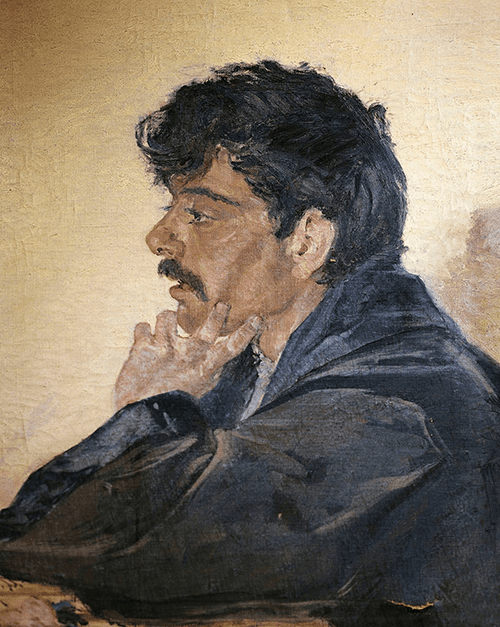Alessandro Stradella (1639 – 1682) was as colorful a figure as he was a great composer. The circumstances of his death were so dramatic (he was stabbed by a paid assassin!) that the German Romantic composer Friedrich Flotow wrote a three-act opera about him. Yet Stradella is not widely known these days. A handful of recent recordings give a good sense of why he’s worth adding to your playlists. Although he only lived into his early 40s, Stradella managed to become a bit of a star in musical circles, with patrons falling over each other to hire him and the best poets and playwrights hoping for a chance to provide him with words to set to music. He was trained in Rome, which was simply the best place in Europe to learn to write vocal music in the 17th century. His fame stemmed from his operas, oratorios, and shorter works for voices. Indeed, he had a magical touch when it came to writing melodic lines in particular. His arias alternate between movingly fluid and charmingly bouncy, long pre-dating the bel canto style. Some of his smaller-scale works can be heard in a new recording by an Italian group that loves Stradella so much that they’re named after him. The Alessandro Stradella Consort was founded in 1987 by director Estévan Velardi. (They record music by other Baroque composers too.) Their two-volume set on Dynamic Records is called Stradella: Cantatas and Serenatas. These chamber pieces would have been performed in wealthy patrons’ homes as unstaged or semi-staged works that had a dramatic flair but didn’t require sets or costumes.
Any great vocal recording rests in large part on the quality of its accompaniment. As a small period-instrument ensemble, the Alessandro Stradella Consort has a sprightly energy, perfect for the era, that balances precision with fluidity. This is demonstrated in the instrumental Ritornello movement from the cantata Infinite son le pene (In case you doubted these pieces were dramatic, that translates as “The pains are infinite.”)
Rosita Frisani, a specialist in these kinds of vocal chamber works, is one of four sopranos involved in the collection. Volume 1 also includes tenor Mario Nuvoli and bass Riccardo Ristori, with bass Gianluca Buratto joining on Vol. 2. In this short duet between Nuvoli and Frisani, you can hear the prominence of the harpsichord and Baroque guitar, as well as the similarity in style to the early Baroque madrigal (a la Monteverdi).
The late 17th century was prime time for the development of the oratorio as a genre. Stradella played a key role in figuring out what an oratorio entailed, decisions which would influence Handel in the coming decades. Stradella seems to have written six oratorios, the first of which he composed in about 1672. This is Santa Editta Vergine e Monaca, Regina d'Inghilterra. (Saint Edith, Virgin and Abbess, Queen of England), dealing with a 10th-century English saint named Edith of Wilton. As is often true of oratorios, there’s not exactly a story, but just Edith and several allegorical characters (nobility, humility, beauty, and so forth) singing arias, recitatives, duets, and choruses. Santa Editta has recently been recorded by a multinational group of voices and period instruments, Ensemble Il Groviglio, founded two years ago. I wish I could say this was good news. In the role of Editta, Italian soprano Laura Andreini is simply not up to the task, particularly the tricky jumping melismas that Stradella often decorates his melodies with. And some sign of understanding mid-Baroque vocal ornamentation would have made a lot of difference.
There aren’t many recordings of this work, but you’re better off with Ensemble Mare Nostrum’s 2016 effort featuring Veronica Cangemi in the title role. That recording is part of the ensemble’s ongoing series of releases on Arcana Records called the Stradella Project. The singing and playing are outstanding throughout. One recent recording in this series is the opera Il Trespolo Tutore (Trespolo the Tutor), a goofily complicated tale of people falling in love with somebody who is in love with someone else. Composed in 1679, this is the only one of Stradella’s seven operas that he classified as comic. It’s also one of the first Italian comic operas ever written. That subgenre is another area where Stradella was historically influential. Conductor Andrea De Carlo makes the most out of the instrumental and vocal figures that would soon become standard comic tropes. In this duet between baritone Riccardo Novaro (as Tespolo) and Roberta Mameli (his pupil, Artemesia, who loves him although he doesn’t realize it), listen for the large leaps in the vocal line, as well as the pounding chordal accompaniment to give it an over-the-top, farcical sound.
A common feature of Stradella’s basso continuo (the two or three people keeping a rhythmic and harmonic foundation going at all times) is the use of Baroque guitar. Here it provides chords under the short aria “Ma che fo?” (What am I doing?), sung by soprano Silvia Frigato, whose voice glitters confidently through all those awkwardly comical leaps. httpv://www.youtube.com/watch?v=HhOMGOdodKs Although the bulk of Stradella’s output was vocal music, he did compose some instrumental works. You’ll find a nice example in Stradella: Complete Violin Sinfonias, new from Brilliant Classics. Ensemble Giardino di Delizie is led by artistic director and soloist Ewa Anna Augustynowicz on Baroque violin. These 12 single-movement violin sinfonias are historically important, even if they’re not well known. In them, Stradella has gone a long way toward inventing the concerto by contrasting the sound of a solo instrument with that of a group of players. That compositional procedure has been standard for so many centuries that it’s hard to remember that somebody had to come up with it first.
So, give a thought to Stradella and his innovative music. During his short life, his candle burned bright and was snuffed out violently. But the tendrils of his creativity stretched into the future, nourishing composers for generations.



